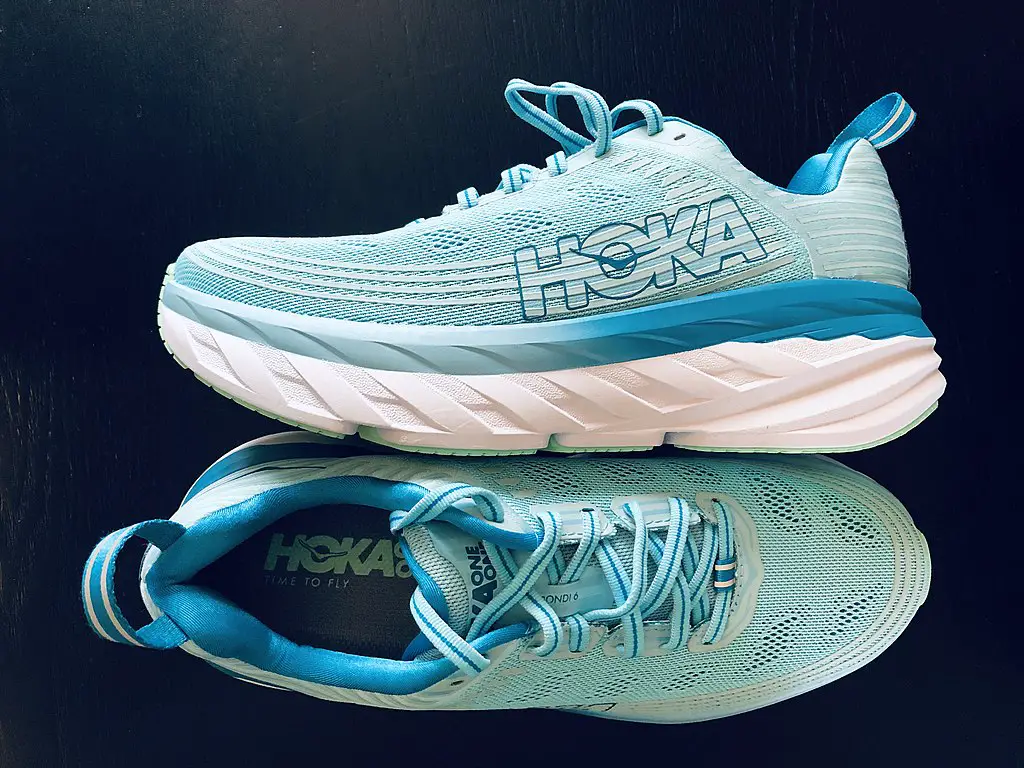Hokas are a type of running shoe that have become increasingly popular in recent years. Their unique design and reputation for providing a maximally cushioned running experience continue to interest runners.
If you’re considering purchasing a pair of Hokas but are unsure about how they fit, this information will help with your purchase decision.

The Unique Hoka Fit
First and foremost, it’s important to note that Hokas are designed to fit differently than traditional running shoes. Rather than a narrow, tight fit, Hokas are built with a wide, spacious toe box to allow for natural foot movement and toe splay. This means that they may feel a bit looser than other running shoes, especially in the toe area.
Hoka Maximum Cushioning
One of the biggest advantages of Hokas is their cushioning. The shoes are built with a thick, foam sole that is intended to provide a soft, responsive ride. This cushioning can make the shoes feel more substantial than other running shoes, and they may take some time to break in and feel fully comfortable.
Heel and Midfoot Sizing
One thing to keep in mind when trying on Hokas is that they should fit snugly in the heel and midfoot, but with plenty of room in the toe box. You should be able to wiggle your toes freely without feeling any constriction or discomfort. If the shoes feel too tight or restrictive in the toe area, you may want to try a half-size up.
Hoka Shoes Men’s and Women’s
It’s also worth noting that Hokas come in both men’s and women’s sizes, and the fit can vary slightly between the two. Women’s Hokas tend to have a slightly narrower heel and midfoot, as well as a slightly shallower toe box than men’s Hokas. This means that if you’re a woman trying on men’s Hokas, they may feel too wide in the heel and midfoot, while men trying on women’s Hokas may find them too narrow.
Hokas Run True to Size
In terms of sizing, Hokas tend to fit true to size. However, as with any shoe, it’s always a good idea to try them on in person if possible to ensure the best fit. You can also refer to the size chart provided by the manufacturer to get a general idea of what size you should be looking for. Another similar brand to Hoka is Brooks, which we compare in our Brooks vs Hoka article.
When trying on Hokas, be sure to wear the same type of socks you would normally wear for running. This will give you a better idea of how the shoes will fit and feel when you’re actually using them. You should also walk around in the shoes for a bit to get a feel for their comfort and support.
Width for Hoka Shoes
Another thing to consider when it comes to Hokas is the width of the shoe. Many Hoka models come in multiple widths, including narrow, medium, and wide. If you have wide feet or if you find that other running shoes tend to feel too constricting, you may want to consider trying a wide-width Hoka.
Hoka Weight
Finally, it’s worth noting that Hokas tend to be a bit heavier than other running shoes. This is due to their thick, cushioned sole and spacious toe box. If you’re used to running in lightweight, minimal shoes, it may take some time to adjust to the extra weight of Hokas. However, the cushioning and support they provide can make them well worth the extra ounces.
Hokas are Not a Traditional Shoe
In conclusion, Hokas fit differently than traditional running shoes, with a wide, spacious toe box and a snug fit in the heel and midfoot. They may feel a bit looser and more substantial than other running shoes, and it may take some time to break them in and get used to their unique fit. However, with a little bit of time and patience, Hokas can provide a comfortable and efficient running experience.

